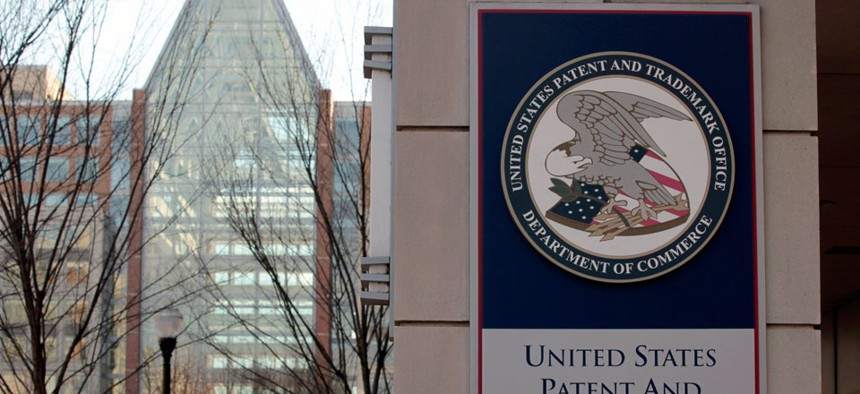Patent Office Telework Scandal Not Really About Telework

The U.S. Patent and Trademark Office is seen in Alexandria, Va. Alex Brandon/AP
Mobile work advocates say the controversy is evidence of a management breakdown.
Revelations of unprofessional behavior within the Patent and Trademark Office’s award-winning work-from-home program have been described as “telework abuses” by investigators and lawmakers -- despite a lack of details specifically linking the problems to telework, mobile work advocates say.
They were abuses, sure. Fundamentally telework-related? Not so much, they say.
A report late last month from the inspector general of the Commerce Department -- the patent office’s parent agency -- found teleworking paralegals were not given enough work and were told to log hours of nonwork under a billing code called “other time.”
The teleworkers were reportedly short of work because of a bottleneck in the process caused by a backlog earlier in the application review progress triggered by a hiring freeze.
According to Government Executive: “The paralegals on the payroll watched television, surfed the Internet, used Facebook, performed volunteer work for a charity, washed laundry, exercised at home, read books and magazines, shopped online or cleaned dishes.”
Teleworker Defenders: Blame Management
Union representatives said the employees themselves wanted work -- some even alerting the IG to their situation. And telework advocates have asked what the workers were supposed to have done in the absence of real work. The most productive among them made use of their time by taking advantage of their location -- in an office, they would have few nonwork options besides surfing the Internet, one argument goes.
“This is not a telework breakdown,” said Steve O’Keeffe, founder of the Mobile Work Exchange. “It’s a management breakdown.”
The Washington Post earlier this month revealed the patent office had failed to report some of the most egregious findings of an initial investigation into abuse of the telework program. This report triggered a congressional investigation “into allegations of telework abuse” launched last week by House Oversight and Government Reform Committee Chairman Darrell Issa, R-Calif.
The uncirculated initial report obtained by the Post said some patent examiners claimed to have worked hours there was no evidence of them working. Supervisors requested “swipe records or computer records” for employees they suspected of misrepresenting their hours but were told the office was no longer pulling these records -- for remote or office-based workers.
The office had the technological ability to track the hours employees were logged into the office’s virtual private network, or VPN -- though logging in was not a requirement during work hours -- as well as when they swiped their agency badge upon entering a patent office building. But managers declined to retrieve this information -- for remote or office-based workers.
Trust is Key to Successful Telework
It’s unclear why this information was denied, but the decision may have been about philosophy. The department in 2010 overhauled how it measured examiners’ performance to focus on productivity.
“What management ought to do is manage based on results,” said John Vivadelli, CEO of AgilQuest, a software and services company focusing on the productivity of mobile workers. His company is used by some federal agencies but not PTO. “What’s the output that you need to get done? It’s an output metric, not an input metric.”
The agency would likely agree output is the relevant measure, but its productivity goals need tweaking, according to experts.
The report found an increasing number of examiners were relatively unproductive most of the time but extremely productive at the end of each quarter, a situation that can result in less careful work and that creates uneven workloads for people further along in the application review process. There currently is no disincentive to working like this, so investigators recommended changing productivity goals to a bi-weekly schedule.
Maximizing productivity is not an issue limited to telework, advocates note.
The report also suggests teleworking examiners make greater use of collaboration tools. Again, a much softer approach than the methods some more hawkish managers advocate, such as constant keystroke monitoring and periodic screen grabs.
“It’s about trust,” AgilQuest’s Vivadelli said. “If there’s no trust between managers and their people, then you have to spend a bunch of money in order to overcome the lack of trust.” He said that's true for both remote and office-based workers.
One interesting and possibly telework-specific case of sly work evasion -- cited in the initial report and in the congressional investigation -- involved a highly productive examiner who used a mouse-mover program that made it appear as if he or she was at the computer. A supervisor saw the program and took a picture of it, but managers were still unable to take action.
It’s unclear where the examiner was working from, or if the supervisor was at his or her home when the picture was taken.
NEXT STORY: Changing Memories to Treat PTSD






